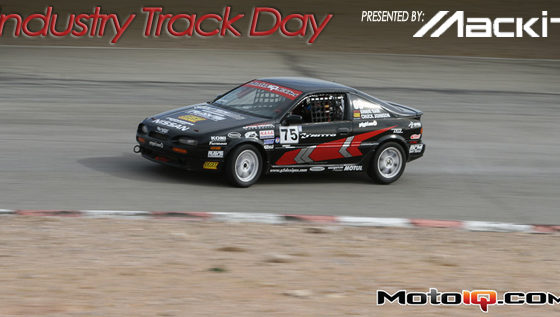,

After the major fabrication was complete, the car was shipped to Performance Auto Body to be sprayed in its original factory black color. For a unique look, it was decided to try to give the car the looks of a hot RC car. Charlie Barnes of CFX graphics http://www.cfxpaintworks.com was contracted to do the finishing work. Charlie is a national noted RC car painter/graphic designer and he created an eye popping graphics scheme that fit the bill. The graphics design was first rendered in a CAD program and printed then clear coated on tough 3M automotive vinyl which was applied directly to the cars body. These computer generated graphics have the look of a multi thousand dollar custom airbrushed paintjob, yet they can be repaired or even changed nearly instantly. These are important attributes for a race car operating in a hostile environment that must be kept looking professionally fresh to keep the sponsors happy. CFX was instrumental in making a custom wild look practical on a hard working race car.

Since Southern California’s race tracks are typically in desert areas, they are full of rocks and windblown sand. This usually makes short work of a race cars paint job, a new paintjob can become quite beat looking in the course of just one race weekend. Starshield Armor was called in to apply their abrasion resistant polyurethane film to the cars body to protect the paint and graphics from rock chipping and sand pitting. Although it’s somewhat costly, the Starshield Armor more than pays for itself, keeping the car sharp looking much longer.

Tony’s goals for the car are to develop it over the year, dialing in the suspension and the motor making an already formidable package deadly fast in time attack and in wheel to wheel NASA racing. Pre-season testing by Mike Kojima has shown that there is still a lot of time left in the car. The VE engine lacks torque in the 5000-6500 rpm range compared to the DE which hampers the car on corner exits. A close ratio gearbox is needed to make the most of the VE’s top end power but the ones that exist do not have provisions for an effective limited slip differential. With these constraints it might just be easier to build an engine with more torque.
The suspension needs additional tuning with a shock revalve and some tweaks to the spring rates to get more grip. Although the car has already proven to be fast, at about 1.5-2 seconds a lap over the original well developed Dog Car, there are probably another 2-3 seconds a lap to be found on this car with development. It will be interesting to see how this Sentra sizes up over the next few months.





1 comment